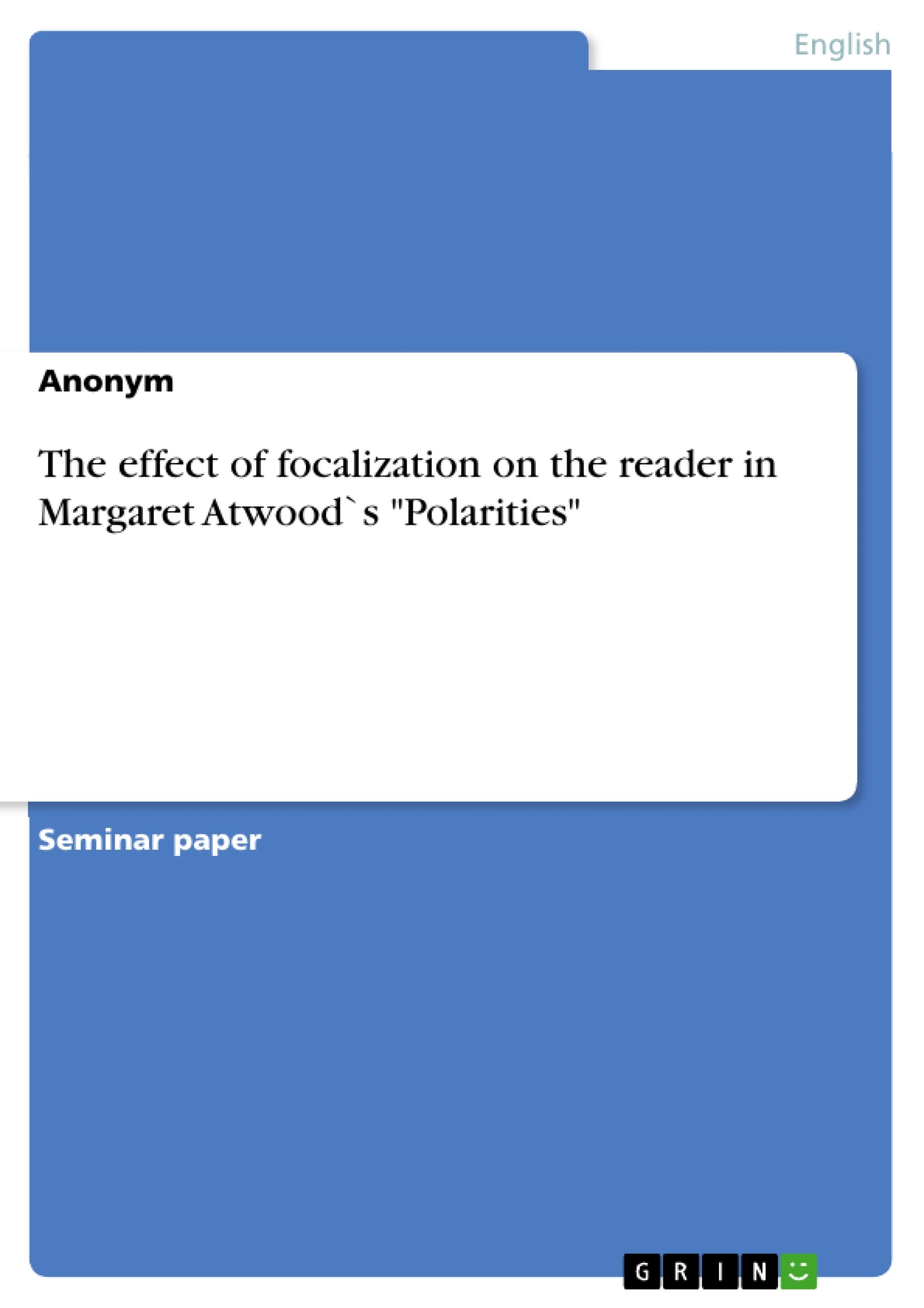The following term paper examines the text "Polarities" of Margaret Atwood using different types of focalization according to Gérard Genette and Mieke Bal. The work is based on Genette and Bal's theories, since Genette originally developed and coined the term focalisation and Bal revised and changed it to a large extent.
The first part of this thesis deals with the explanation of the three different focalization types according to Genette and the theory of Mieke Bal. The second part gives examples of text elements from the short story to show the different types of focalization according to Genette and Bal. In the third and last part a conclusion is presented, in which it is summarized, what the focalization types do with the reader and which advantages and disadvantages arise with the definition of the focalization types.
Inhaltsverzeichnis (Table of Contents)
- Introduction
- Defining Focalization
- Gérard Genette's Theory
- Mieke Bal's Theory
- Difference between Genette and Bal
- Focalization in `Polarities`
- Conclusion
Zielsetzung und Themenschwerpunkte (Objectives and Key Themes)
This term paper examines the short story "Polarities" by Margaret Atwood, focusing on the various types of focalization as defined by Gérard Genette and Mieke Bal. The analysis is based on the theories of these two scholars, as Genette initially developed the concept of focalization, while Bal significantly revised and expanded it. The paper explores different types of focalization, their characteristics, and their impact on the reader's experience.
- Focalization as a literary technique in "Polarities"
- Comparison and contrast of Genette and Bal's theories on focalization
- The relationship between focalization and reader engagement
- The impact of focalization on the interpretation of narrative elements
Zusammenfassung der Kapitel (Chapter Summaries)
The introduction provides an overview of the paper's focus, highlighting the importance of focalization in literary analysis and introducing the theories of Genette and Bal. It also outlines the structure of the paper, which includes a detailed explanation of focalization types, examples from the short story, and a concluding section.
The second chapter delves into the definition of focalization, tracing its origins to Genette's work. It examines Genette's classification of focalization into three forms: external, internal, and zero focalization, exploring their characteristics and specific variations.
The third chapter focuses on Bal's theory of focalization, which builds upon Genette's work. It introduces Bal's model of text levels and its implications for understanding narrative perspectives. It also examines Bal's concept of focalizing and focalized figures and contrasts her approach with Genette's.
Schlüsselwörter (Keywords)
Focalization, narrative theory, Gérard Genette, Mieke Bal, Margaret Atwood, "Polarities", external focalization, internal focalization, zero focalization, text levels, focalizing figure, focalized figure, reader engagement, narrative perspective.
- Quote paper
- Anonym (Author), 2019, The effect of focalization on the reader in Margaret Atwood`s "Polarities", Munich, GRIN Verlag, https://www.grin.com/document/1333710



